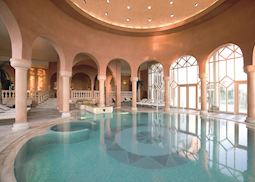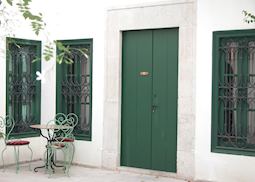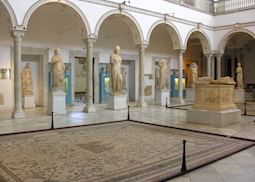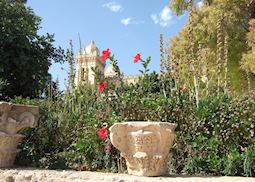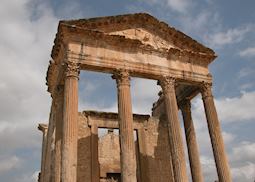Jump to:
The roots of Tunis are said to date back as far as the second millennium BC, although the town was destroyed along with Carthage by the Romans in 146 BC.
It was eventually rebuilt, but only rose to prominence with the arrival of the Muslims in the seventh century, at which time its medina was built.
History and influence
Standing as a relatively opulent city in the Middle East for centuries, boosted by its Mediterranean location, Tunis sat in the hands of many rulers, and was exposed to some diverse influences.
Various Muslim dynasties governed Tunis, and it became a part of the Ottoman Empire in the sixteenth century.
In 1881, control was then assumed by the French, the effects of whose colonial rule can be seen in some of the architecture, particularly around Avenue Habib Bourguiba, where the theater and the Embassy buildings are a reminder of the times before Tunisian independence.
Tunis culture
Modern day Tunis embraces a clutch of styles, and its people reflect this in equal measure.
On the main boulevard sit numerous cafés with outdoor seating from which locals often while away time watching the world pass, while just half a mile from this Parisian part of the city one encounters the Medina of Tunis, wherein many live their lives similar to the ways their ancestors might have done over a thousand years before.
who's been there
Start planning your tailor-made trip to Tunis by contacting one of our Tunisia specialists
-
617-223-4521617-223-4760
- Make an inquiry
Places near Tunis
- Carthage 9 miles away
- Sidi Bou Said 11 miles away
- Thuburbo Majus 32 miles away
- Dougga 60 miles away
- Kairouan 78 miles away
- Tabarka 80 miles away
- Bulla Regia 83 miles away
- El Jem 109 miles away
- Tamerza 210 miles away
- Jerba 213 miles away
- Tozeur 231 miles away
- Ksar Ghilane 267 miles away
Photos of Tunis
Accommodation choices for Tunis
We've selected a range of accommodation options for when you visit Tunis. Our choices usually come recommended for their character, facilities and service or location. Our specialists always aim to suggest properties that match your preferences.
-
![The Residence, Gammarth]()
The Residence
Tunis -
![Dar El Medina, Tunis]()
Dar el Medina
Tunis
Ideas for experiencing Tunis
Our specialists seek out authentic ways to get to know the places that could feature in your trip. These activities reflect some of the experiences they've most enjoyed while visiting Tunis, and which use the best local guides.
-
The Bardo Museum ![Bardo Museum, Tunis]()
The Bardo Museum
The Bardo Museum
Tunisia's most celebrated museum exudes history throughout. The inside of the museum is famous primarily for its vast and unparalleled collection of mosaics, gathered from the floors of Tunisia's Roman sites and carefully arranged in the rooms.
View details -
Carthage City Tour ![Carthage and Cathedral]()
Carthage City Tour
Carthage City Tour
One of the best ways to begin a visit to Carthage is to take a view of it from on high. The Byrsa Hill looks out over the whole city and the vista extends to the mountains of the Cap Bon beyond the Gulf of Tunis.
View details -
Tunis Medina Tour ![Tunis Medina]()
Tunis Medina Tour
Tunis Medina Tour
Medina comes from the Arabic word for city, and it refers to the old quarter of Tunis. Your first entry to the Medina of Tunis will most likely come through the Bab Bahr at Place de la Victoire, the Gate into the medina from Avenue Bourguiba.
View details -
Sidi Bou Said ![Sidi Bou Said marina, Tunisia]()
Sidi Bou Said
Sidi Bou Said
The strong and consistent colors of the buildings, pure whites and blues complemented by the turquoise sea, are simply beautiful, while the narrow, winding cobbled streets all add to the charm of the village.
View details -
Dougga & Bulla Regia Excursion ![Dougga, Tunisia]()
Dougga & Bulla Regia Excursion
Dougga & Bulla Regia Excursion
While some might argue that Tunisia does not possess a stunning draw, such as the Pyramids of Giza, or the ancient city of Petra, there is little doubt that Dougga is the pinnacle of the Roman presence in Tunisia, and looks out majestically over the hills.
View details


